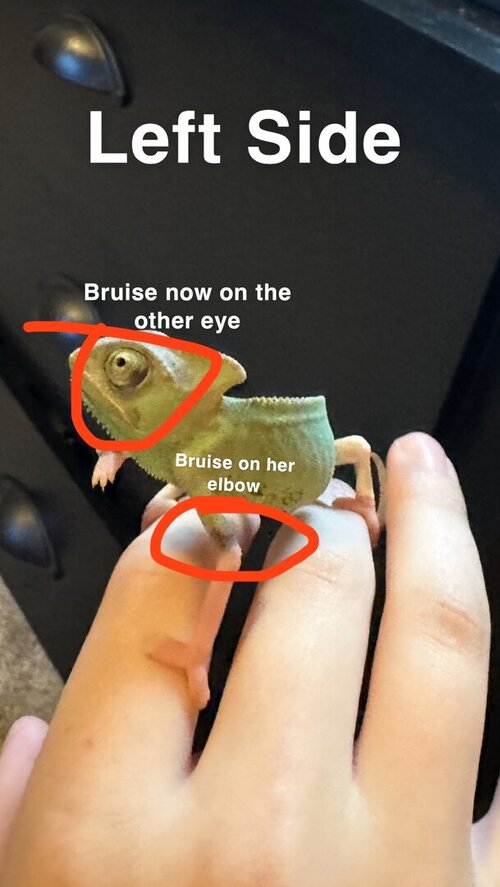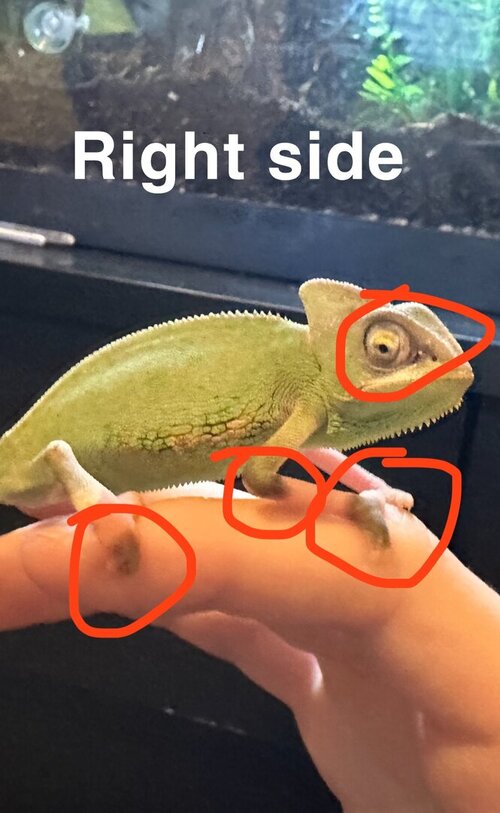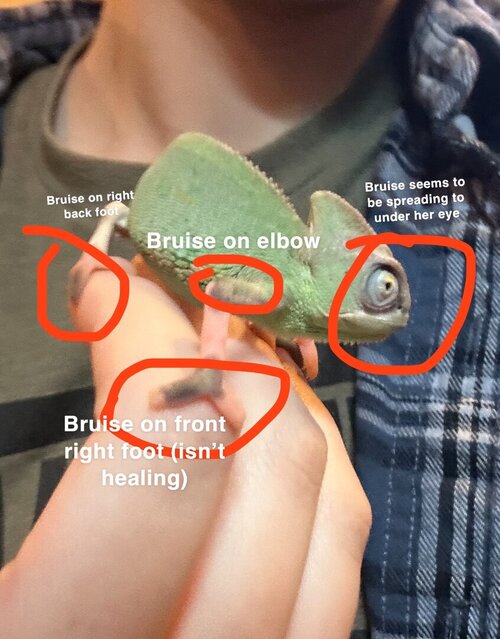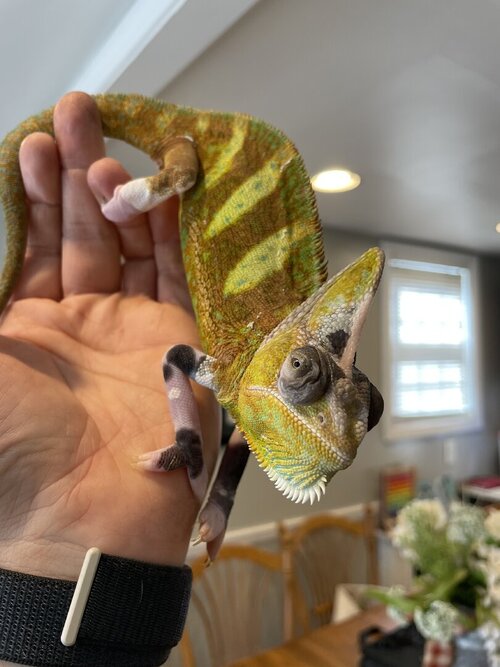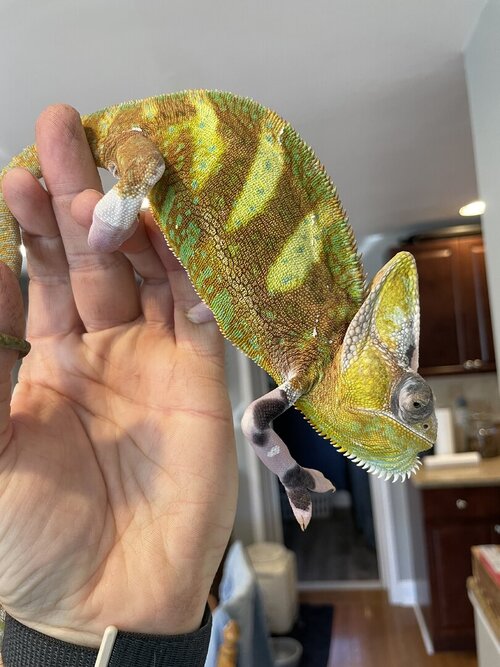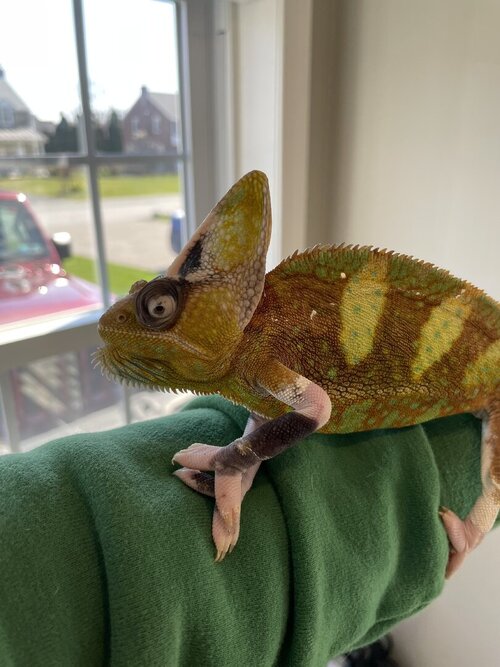KayMcAraw
New Member
My chameleon Koko is about 2 months old, I got her an almost two weeks ago and I noticed the bruising a day or two after I got her, she first bruised on the feet and a little on her arm. When I bought her, the people struggled to get her into the little transportation box and I am pretty sure they ended up shaking her off into the box (which made me upset because I know how fragile baby chameleons can be) Anyways, I am pretty sure that is how she got the bruises on her feet and arm. About three days after I noticed the arm bruising, I noticed a bruise forming on her right eye. I talked to a vet and they said to monitor it closely but it should go away. Two days after that she started holding her eye closed which told me it hurt but what was weird is that it was not swollen. Today, I noticed a tiny bruise forming on her left eye. I am worried and don’t really know what to do because I know it’s not normal. She is eating 3 little grasshoppers a day and drinking plenty. She poops regularly and hunts her own grasshoppers really well. I have the humidity where it’s supposed to be and the temperatures. I have a UV light and she has lots of branches to climb on. I am curious on what is causing these bruises and why they aren’t really healing. I could really use some tips on what to do. (Also, her ribs were showing pretty bad when I first got her, she has thickened up a lot but there is still a tiny tiny shadow where you can see her ribs, I just don’t want any of yall to think that she isn’t eating enough)

